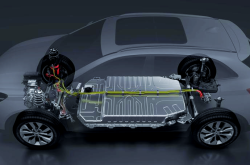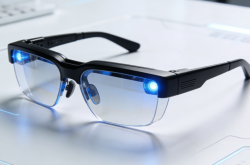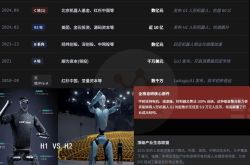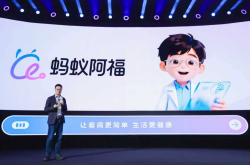【CIM Acceleration, AI at Its Best】No.1|AI Reconstructs CIM: GEONICOL Launches the First CIM AI Foundation, Lowering the Barrier to Industrial Agent Use
![]() 09/19 2025
09/19 2025
![]() 615
615
In semiconductor processes, with the industrial software 'overseer' CIM covering all aspects of wafer production, originally independent systems like MES, EAP, MCS, and YMS form a collaborative, more powerful new system. This helps chip production meet the demands of low fault tolerance and high software stability.
With the rapid development of large model technology, AI technology has become a crucial auxiliary productivity tool and work partner. Mastering the application of large model tools is becoming a key competitive edge for semiconductor companies to enhance the value of CIM. But how can large model tools break through traditional CIM constraints of data silos and 'human-mediated' systems through knowledge extension and intelligent collaboration? How can a new form of CIM lead innovative changes in semiconductor Smart Manufacturing (smart manufacturing)?
Based on these questions, MK Koh, CTO of GEONICOL, earlier proposed the 'Evolutionary Path for Semiconductor CIM,' defining the direction for the next generation of CIM. In his view, the core of CIM evolution is transitioning from 'experience-driven' CIM to a 'data-driven + AI-collaborative' CIM intelligent decision-making hub. This relies on the deep integration of large model agents with enterprise-level data, business processes, and system tools, reconstructing CIM 'designed for humans' into CIM 'designed for roles.'
What is 'role-designed' CIM? MK Koh provides a detailed technical explanation: A CIM that understands 'roles' will, based on given objectives, find ways, tools, and step-by-step methods to complete 'tasks.' It acts as a network of proactive 'digital employees' capable of sensing the environment, making decisions, and taking actions. In this setup, the 'role-designed' CIM serves as the brain, while multiple agents act as hands and feet. Each agent, as a 'digital employee,' proactively calls APIs from different CIM subsystems to obtain information and execute tasks when it realizes it lacks corresponding information to fulfill its role. All these visions are becoming reality on GEONICOL's recently developed CIM AI Foundation.
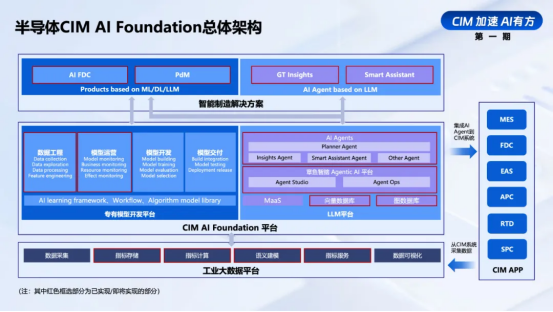
As an industrial AI leader originating from TCL with a strategic focus on semiconductors, the company has recently completed a major R&D upgrade of its CIM AI Foundation. At the architectural level, it redefines the 'AI foundation' for semiconductor CIM, achieving systematic breakthroughs from data intelligence and model development to agent applications, systematically constructing a multi-agent system platform. The multi-agent system comprises various virtual 'role' entities, including a master control agent, sub-agents, reference assistants, memory systems, and toolkits. It adopts a 'coordinator × worker' model, where through division of labor and collaboration, it functions like a real team, solving complex problems that are difficult for individuals to handle efficiently through clear role divisions and parallel processing. It transforms a complex task into a collaborative, iterative, and scalable task network, truly achieving a paradigm shift from 'human-driven systems' to 'AI-driven systems.'
The core positioning of GEONICOL's CIM AI Foundation is as an 'interconnecting and empowering' AI middleware platform. It integrates a multi-agent system, connecting and fusing massive heterogeneous data generated by traditional CIM systems like MES, EAP, APC, and FDC downward, breaking system barriers and constructing a unified, clean, and real-time high-quality data lake. Upward, it provides 'plug-and-play' models and services for various intelligent applications through standardized and modular AI capability interfaces. This means that if a semiconductor smart factory needs to develop an AI agent, whether it's a yield analysis assistant or an equipment predictive maintenance assistant, it no longer needs to start from scratch but can quickly call pre-packaged algorithm components, model services, and knowledge base capabilities from the middleware platform, like building with LEGO.
Notably, this AI middleware platform already hosts different agent platforms and assistants participating in collaborative evolution.
01 Octopus Agentic AI Platform 3.0
Used for agent development and empowerment, it provides low-threshold/zero-code visual orchestration and AI agent digital employee construction tools, along with a complete AgentOps lifecycle management process for agent testing, tuning, and deployment. It covers over 100 agent tools, including automatic report generation and abnormal loss tracing.
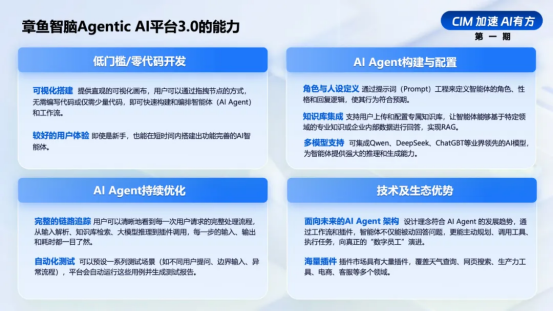
02 GT Insights
Used for semiconductor factory data analysis and insights, it supports intelligent interaction and insights for business metrics. Based on powerful semantic modeling technology, it translates complex database fields into business metrics understandable to business personnel. Using natural language queries, it can self-parse intentions, generate SQL, execute queries, and visualize results, while supporting dynamic generation of complex dashboards. It compresses traditional hours-long data extraction and analysis tasks into minutes. It now has built-in dozens of yield analysis workflows optimized for semiconductor scenarios, enabling one-click yield root cause tracing, reducing expert dependence, and shortening analysis task times to minutes.
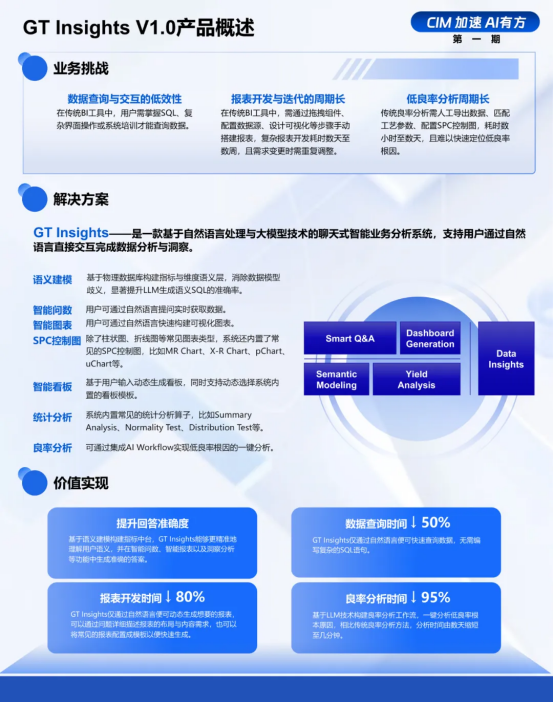
03 Numerous agent applications in the Xiaoluban and AI FDC product families, such as intelligent parameter selection and intelligent alarm classification
Used for equipment predictive maintenance, building semiconductor factory knowledge bases, and operation assistants. AI FDC can accurately detect faults, clearly indicate 'why it's abnormal' and 'what defects are related,' and continuously evolve through online learning. The Xiaoluban AI agent is used for knowledge inheritance and operation assistance. Based on a multi-modal document parsing engine, it supports a dual-engine system combining vector and graph databases, balancing performance and accuracy in the knowledge base system. It transforms tens of thousands of unstructured knowledge items in the factory into queryable, inferable, and executable structured knowledge bases. Through terminals like AR glasses, it intuitively pushes maintenance guides and operation steps to engineers, significantly reducing equipment management training costs and misoperation risks.
GEONICOL's R&D upgrade positions it as a pioneer in China's CIM industry for productizing multi-agent concepts. The deeper value lies in systematically constructing a continuously evolving, open, and collaborative AI ecosystem in the semiconductor CIM field for the first time. This ecosystem not only addresses the issues of redundant development and maintenance costs caused by 'stovepipe development' but also provides 'intelligent derivation' and 'autonomous evolution' capabilities for future smart factories to handle new processes, equipment, and problems through the agent framework. In the future, every new CIM challenge can be precipitate (precipitated) into reusable models or workflows, becoming the collective intelligence that continuously grows within the factory. From a broader perspective, this architectural-level innovation significantly lowers the implementation barrier for AI applications, enabling semiconductor companies to quickly build proprietary intelligent capabilities. On the other hand, through knowledge precipitation and autonomous evolution mechanisms, it makes smart manufacturing systems truly continuously appreciating assets.
China's semiconductor smart manufacturing is moving from 'automation' to the depths of 'intelligence.' The competition is not just about the intelligence of hardware equipment but also the soft power of deeply integrating data, knowledge, algorithms, and business scenarios. The launch of GEONICOL's CIM AI Foundation undoubtedly provides the industry with a solid, open, and future-oriented answer.

